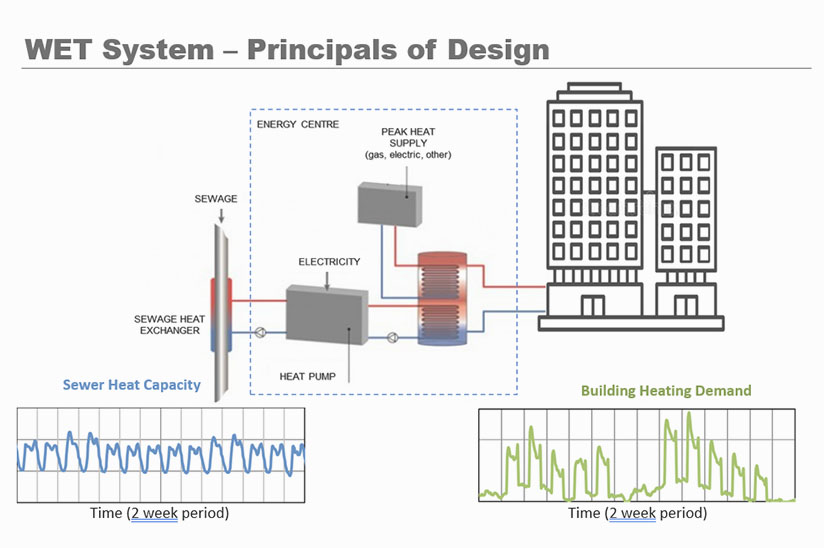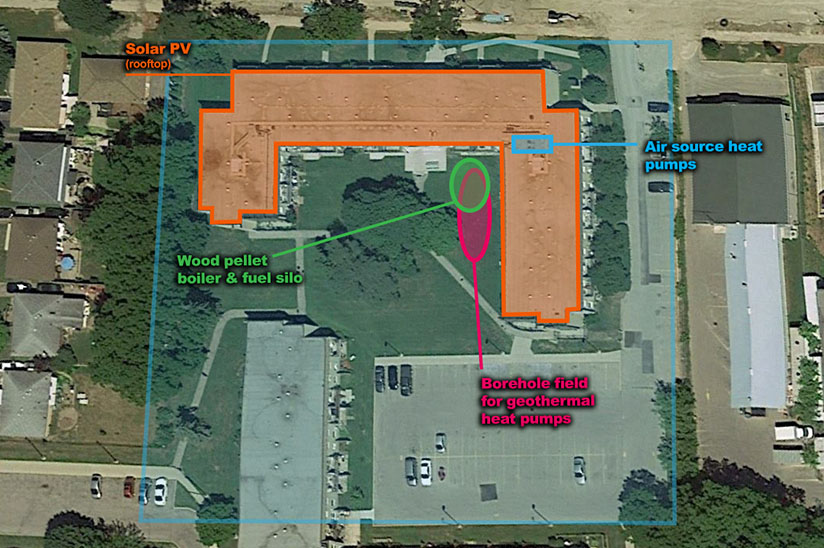Client: Queen’s University
Location: Kingston, Ontario
Size: Four buildings with a total floor space of 44,732 m2 (481,500 ft²)
The West Campus of Queen’s University (University) in Kingston, Ontario, consists of five major buildings, as well as several sports fields, and is located approximately 1 km from the main University campus. Heating to the buildings has been supplied by an underground steam line from the natural gas fired steam plant on the University’s main campus. JLR was retained to lead a study to identify and rate viable options for revamping the energy supply options to the West Campus buildings, while not relying on steam heat. The study included the possibility to supply cooling and electricity, in addition to space heating, and had a goal of reducing greenhouse gas (GHG) emissions.
Each building was modeled using transient system simulation tool (TRNSYS), a sophisticated modeling software designed for understanding the complex interactions within energy systems. Multiple TRNSYS models were built using several different cleaner energy sources, including photovoltaics (PV), solar thermal, air or ground source heat pumps, biomass boilers, and combinations of these. The various systems were modeled using hourly, typical weather for Kingston; component capacities were adjusted until technically viable solutions were obtained. After fine tuning and verification of the models, the capital and operating costs were estimated, including required modifications to the existing HVAC equipment within each building and the options were compared on the basis lifecycle cost and GHG reductions from current operations.
After reviewing all options presented, the University determined that the biomass boilers using wood pellets for fuel was the preferred option.



